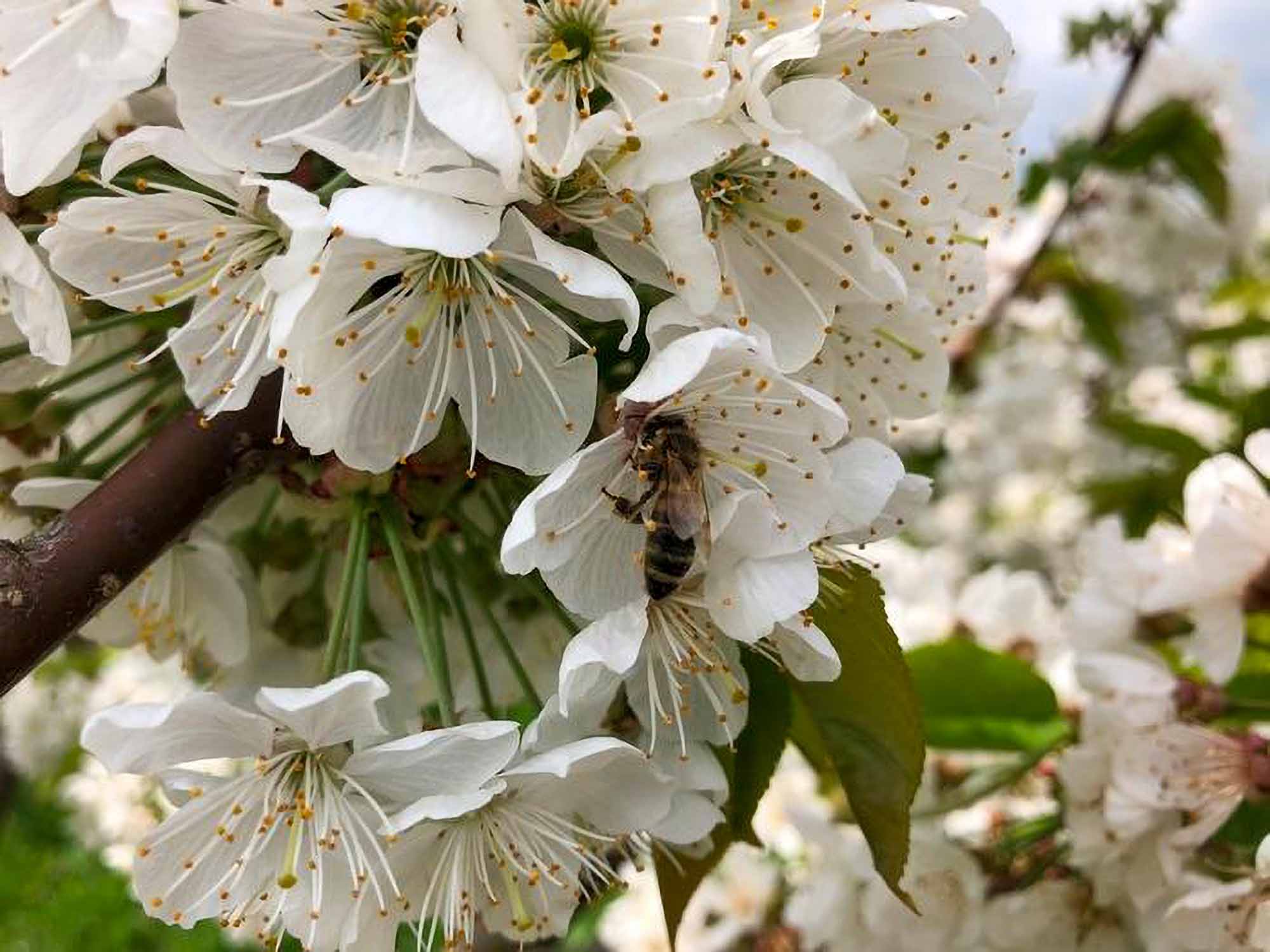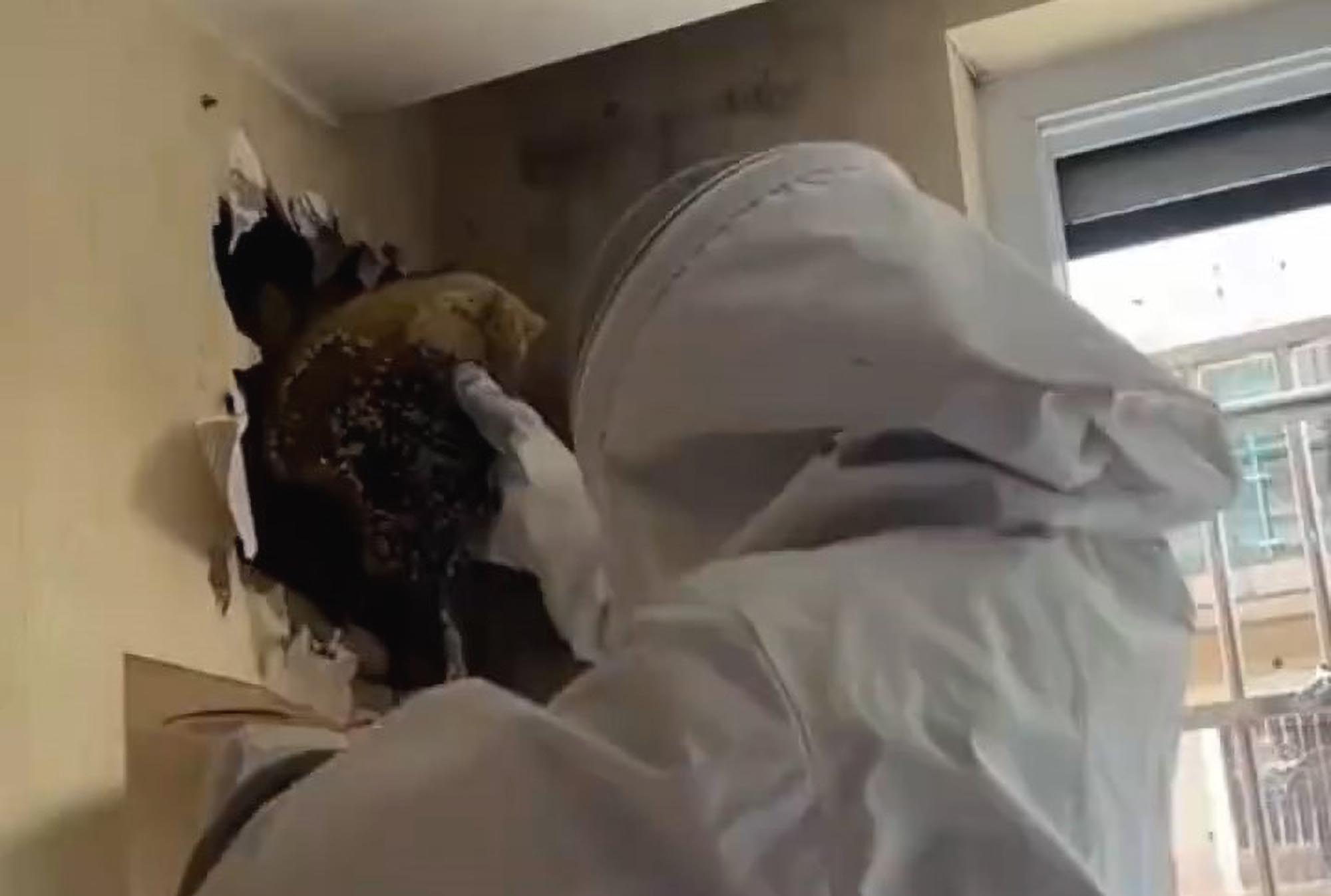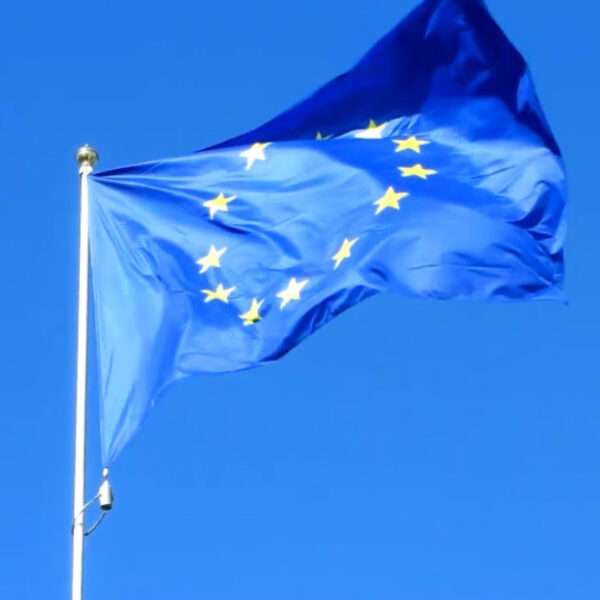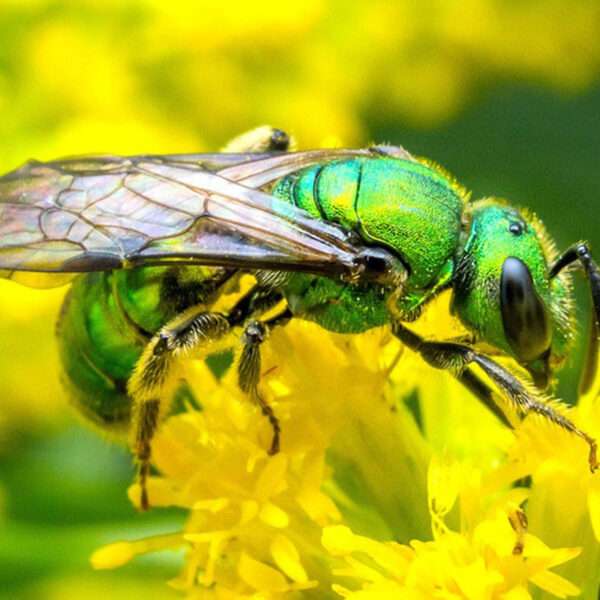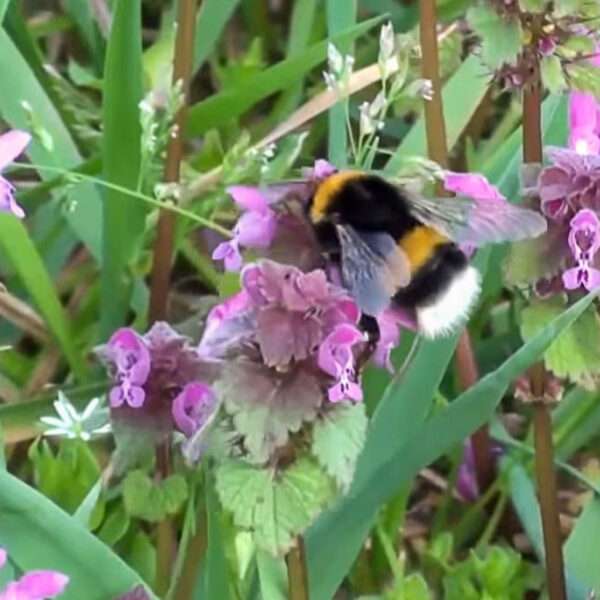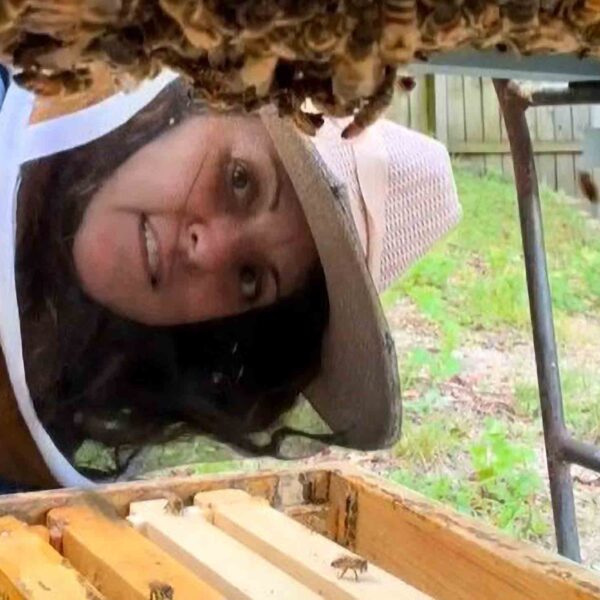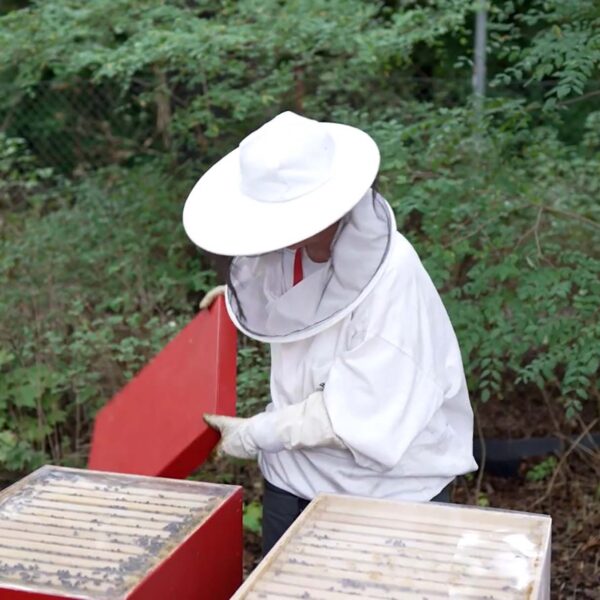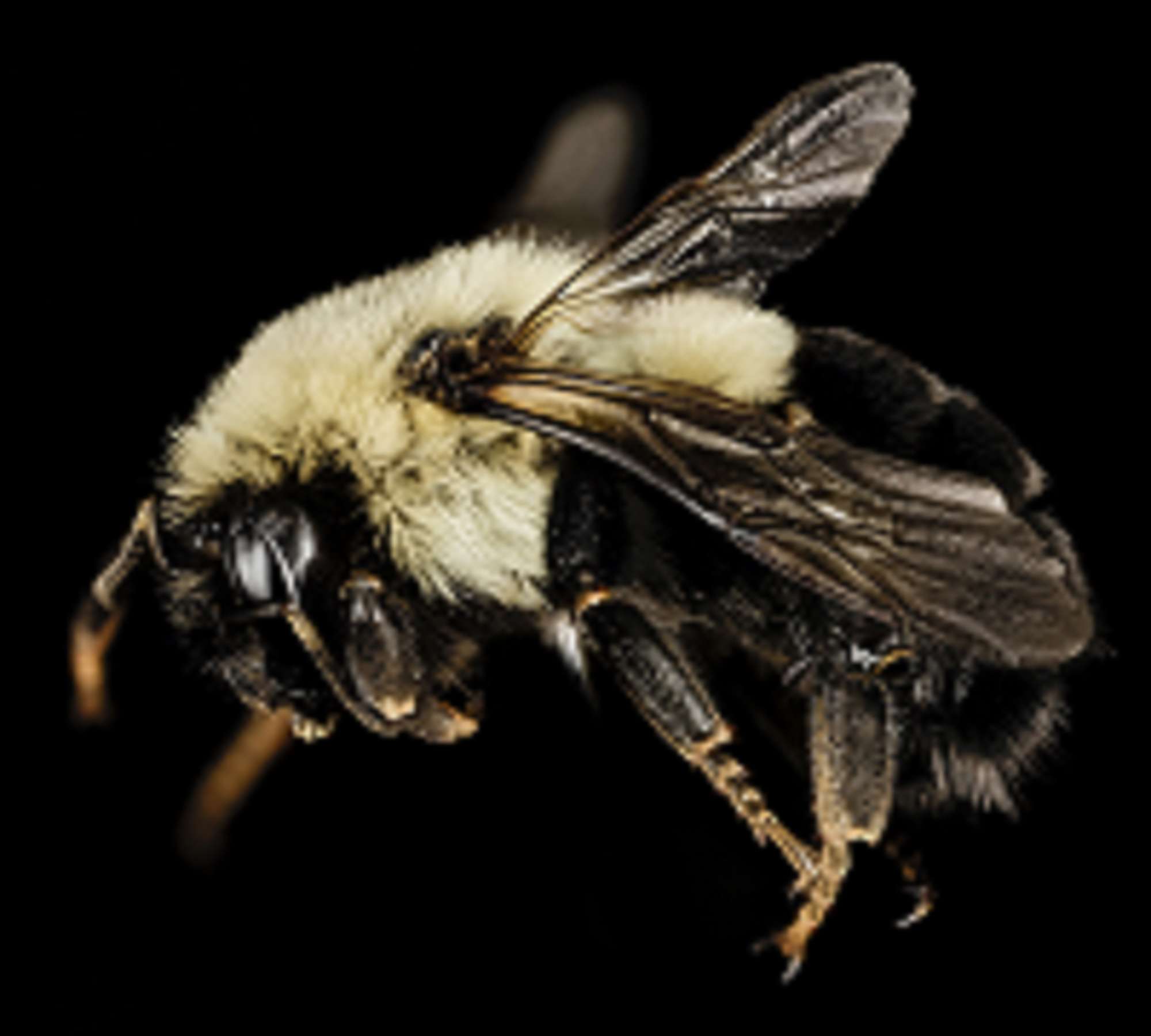Orchard owners should create ideal circumstances for solitary bees, according to scientists who determined the immense synergy effects of honeybees and mason bees operating side by side.
Researchers from Sweden’s Gothenburg University and the German Martin Luther University Halle-Wittenberg observed the pollinators’ activity at 17 cherry orchards in eastern Germany.

Most sweet cherry varieties depend on cross-pollination, according to Swedish biologist Julia Osterman.
Julia said: “This means that there need to be several different cultivars of sweet cherry trees in an orchard for the bees to transport pollen from one to another.”
Julia, who is the study’s lead author, explained that sweet cherry trees were usually planted in alternate rows of different cultivars.
The biodiversity expert said: “The bees have to fly from one row of trees to the next to ensure that the trees set fruit.”
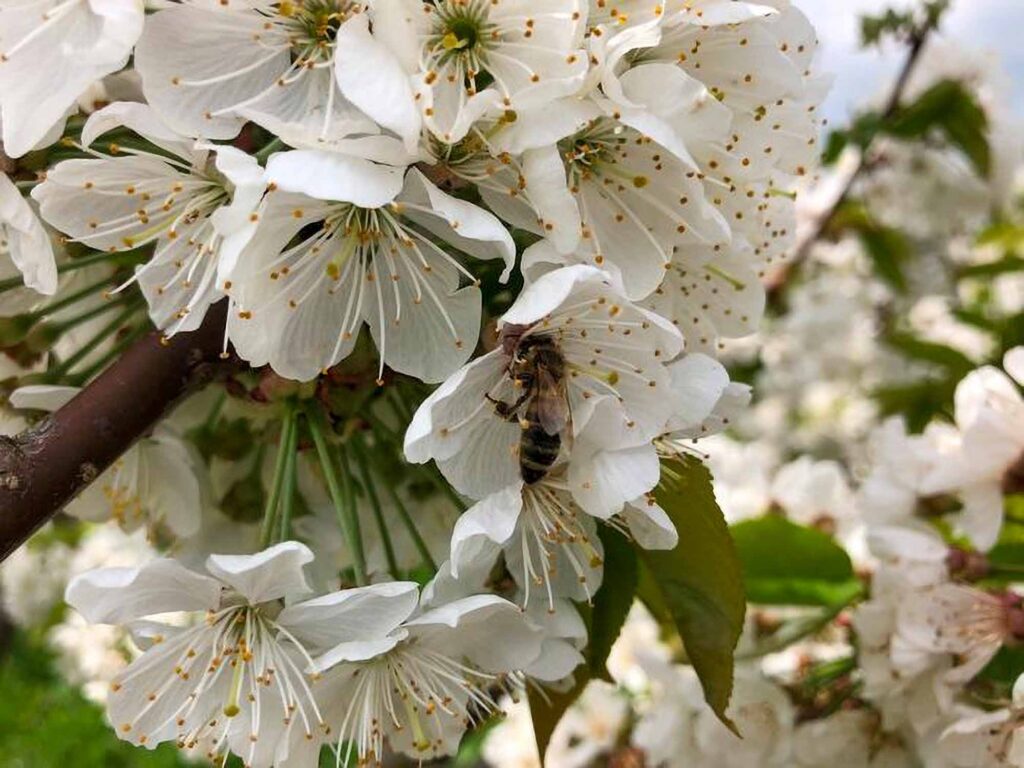
Julia and her colleagues in Gothenburg and Halle-Wittenberg found that the trees produced a higher number of cherries if they were pollinated by more than just one bee species.
The Gothenburg University scientist said: “The orchards with honeybees and lots of mason bees could have cherries on up to 70 per cent of the blossom. In orchards with only honeybees or only mason bees as pollinators, the rate could be as low as 20 per cent.”
The researchers at the higher education institutions in Sweden and Germany are now focusing on finding out more about the reasons for this remarkable synergy effect.
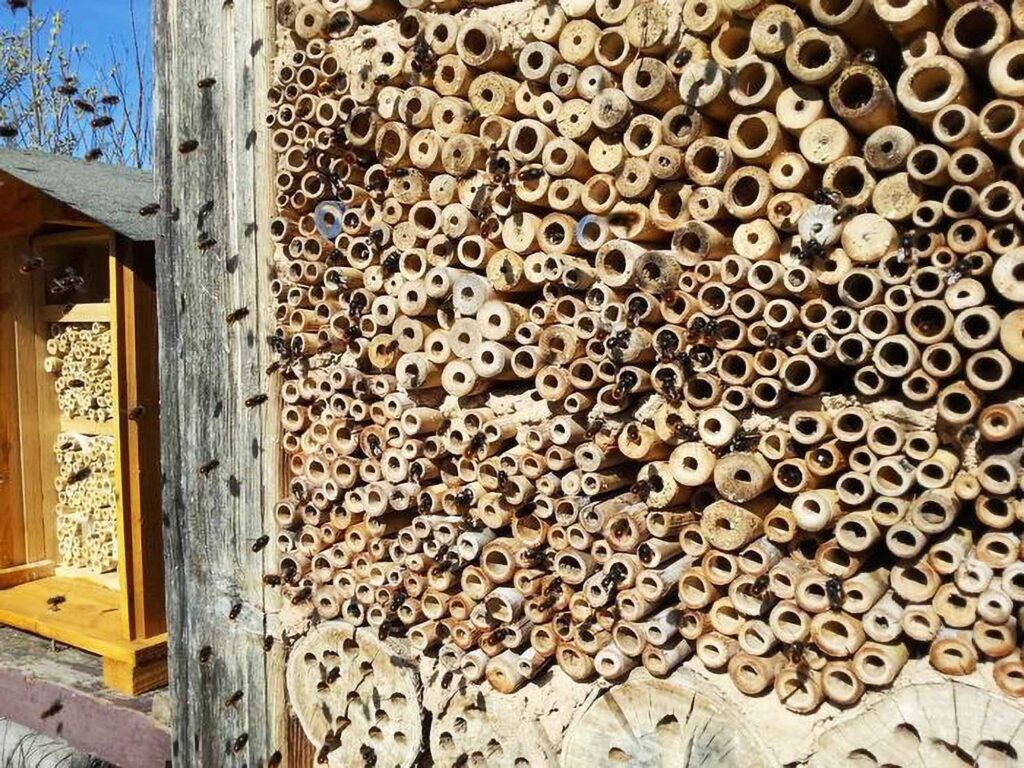
Julia said: “One theory is that the presence of mason bees affects the foraging behaviour of honeybees. This disturbs them and so they change rows more often, resulting in more cross-pollination.”
Mason bees are one of the thousands of solitary pollinator species that exist all over the world. Unlike domesticated honeybees, they do not produce honey. Mason bees lay their eggs into small crevices, small cracks in stones and various other small dark cavities.
Anyone interested in supporting local biodiversity and native bees can do so by abstaining from mowing a part of their lawns or leaving deadwood on the ground.

Julia suggested: “Fruit growers can encourage mason bees to nest in their orchards by placing bamboo or wood with holes drilled in it at the site.”

